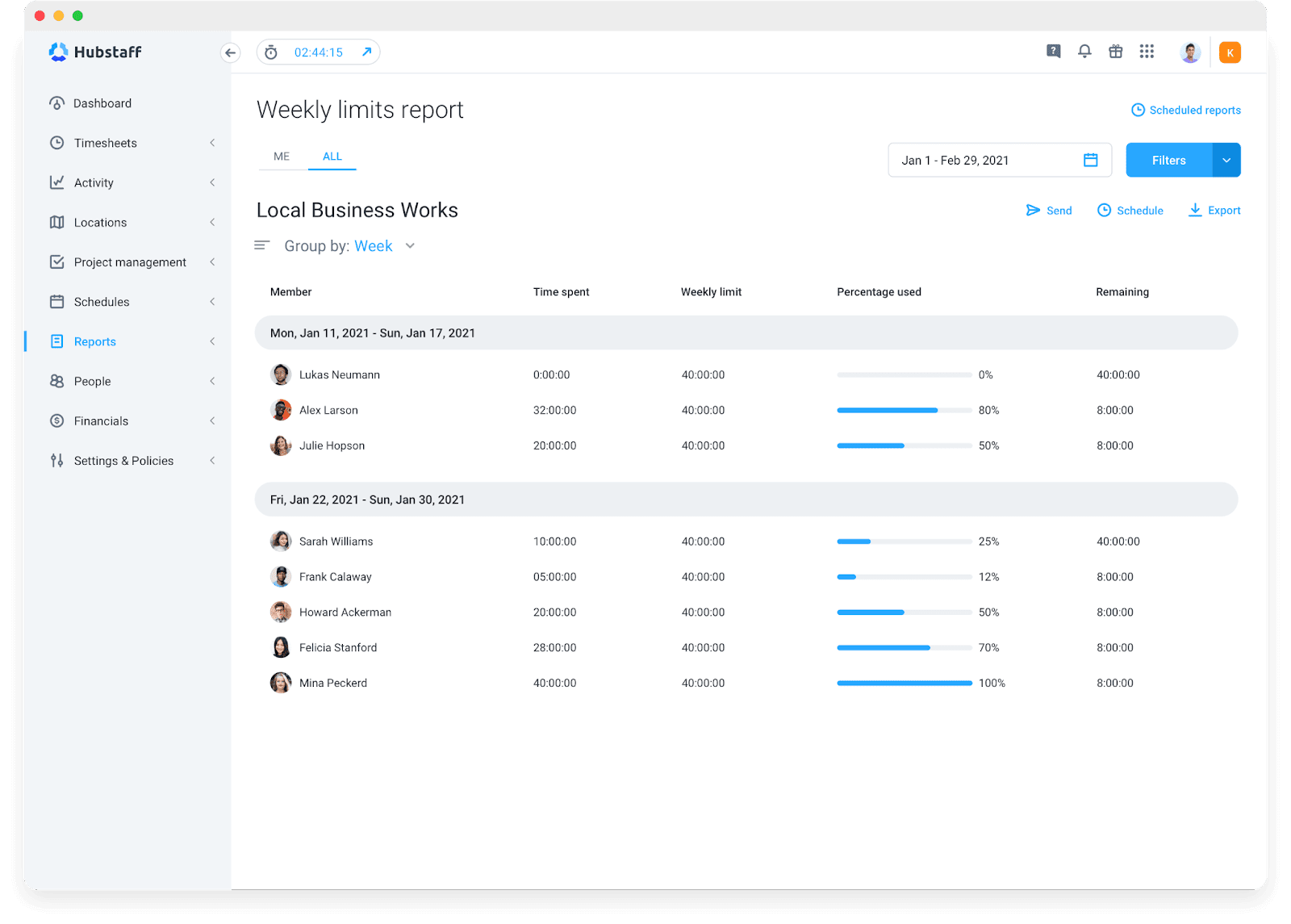For almost a century now, we’ve been teased with the potential of a four-day workweek. From the economist John Maynard Keynes in 1930 to U.S. President Richard Nixon in 1956, many have discussed the benefits of clocking fewer hours.
Though it sounds innovative and modern, advocacy for shortened workweeks is not a new concept. Here’s what we know about the revival of this trend:
- Employees want a four-day workweek. New research shows that seven in ten employees plan to ask their employer to consider a four-day workweek in 2023.
- The UK successfully implemented a four-day workweek trial. After this experiment concluded, research showed that 65% of UK businesses surveyed decided to begin implementing a shortened workweek.
- Company leadership isn’t universally convinced. Despite the widely publicized trials in the UK and many other parts of the world, some business leaders have not entirely accepted the idea of the four-day workweek.
Where does that leave us? At a standstill. But the tides may be changing. We’re here to help demystify the elusive four-day workweek. Let’s discuss its benefits and how it can contribute to positive employee experience and organizational wellness.
Boost your team’s efficiency with Hubstaff's productivity tools
What is the 4-day workweek?
A four-day workweek is an employee schedule of four eight-hour workdays, or 32 hours per week, with a 100% salary. Yes, you read that right. A four-day workweek is not four ten-hour days. It’s not a Dupont or a 2-2-3 shift schedule. It’s full pay for only four days of work.
So how does this work, and why would businesses consider this option? As the research shows, people are actually more productive when they work less. This is how employees can get 40 hours of work done in 32, and it is the driving force behind the movement for a shorter workweek.
But that’s not all. Studies show impressive benefits associated with a shorter workweek. Take a look at these surprising advantages.
Why should companies consider a 4-day workweek?
- To reduce employee turnover and absenteeism: In the UK four-day workweek trial, businesses reported a 65% decline in employee sick days and a 57% decrease in turnover.
- To increase productivity: In 2019, Microsoft Japan introduced a four-day working week and reported a 40% boost in productivity.
- To improve work-life balance: In the UK trial, 62% of employees reported combining work with socializing during a four-day workweek was easier.
- To positively impact profits: In the U.S. and Ireland’s four-day workweek trials, companies reported a revenue increase of 38%.
- To reduce burnout and work-related stress: 71% of employees in the UK four-day workweek trial self-reported decreased work-related burnout, and 39% said they were less stressed.
This approach has undeniable benefits, but before discussing a complete overhaul of our standard 40-hour system, let’s look at the current state of employee satisfaction.
The current state of work and employee satisfaction
This likely won’t surprise you, but people are overworked. And unsettling new research indicates that employees working 54 hours a week or more are at significant risk of dying from overwork.
Overworking isn’t a new issue. Americans have been working some of the longest hours in industrialized countries for decades now. What’s more is that Europeans have been working less and still outputting more, according to an International Labour Organization study from 1999.
Research shows that Americans work 25% more than Europeans.
Employees in the U.S. are split when it comes to job satisfaction. According to recent Pew research, about half of U.S. employees (51%) are happy with their work. Just over half (52%) say their employer cares about their well-being.
Several years into remote and hybrid work, managers are now considering how to build a remote employee experience that helps them stand out from the crowd. Enter the UK four-day workweek trial.
The highly successful UK 4-day workweek trial
Recently, the concept of a four-day workweek has been linked to the successful trial in the UK. To study the impact of a four-day workweek, 61 companies in the UK operated under a 20% reduction in working hours for employees, with no decline in wages, for six months.
The result? Almost every business participating in the UK trial (92%) continued operating under a four-day workweek after the conclusion of the trial.
Researchers at the University of Cambridge and Boston College studied the companies participating in the trial and discovered that shortened weeks decreased burnout, stress, and absenteeism.
A sociologist at the University of Cambridge, David Frayne, said in a press release, “We feel really encouraged by the results, which showed the many ways companies were turning the four-day week from a dream into realistic policy, with multiple benefits.”
What companies have a 4-day workweek?
Curious about companies that have successfully implemented a four-day workweek? Here are a few success stories:
- Kickstarter: The crowd-funding platform established a four-day workweek trial earlier this year, where employees work Monday to Thursday.
- Buffer: This social media organization platform announced in 2021 that it was permanently adopting a four-day workweek
- Basecamp: Basecamp has a seasonal approach to the four-day workweek; they allow employees to work four-day weeks during the summer. Outside of the summer months, their team still works a five-day week.
Let’s take a closer look at how a four-day workweek works for companies.
Chilli Fruit Web Consulting case study
To learn more about the four-day workweek experience, we spoke with one of the businesses participating in a UK pilot program, Chilli Fruit Web Consulting.
“Our decision to operate on a four-day workweek was based on the desire to improve employee satisfaction, increase productivity, and provide a better work-life balance for our team,” said Milosz Krasinski, Managing Director of Chilli Fruit Web Consulting.
Chilli Fruit Web Consulting experienced impressive benefits from its new work schedule in the first two months.
- Productivity levels increased by 15%, as team members reported feeling more focused and motivated during their four work days.
- Employee satisfaction increased by 20%, with team members feeling less stressed and more fulfilled.
- Chilli Fruit has seen a reduction in absenteeism. Only 5% of their team members have taken unplanned time off during the first two months of the pilot program, compared to an average of 7% during a typical five-day workweek.
So, how did their clients respond to this new change? Krasinski said the results were largely positive. During the first month of their pilot program, the Chilli Fruit team set up an automated response to let external partners know they would be out of the office and would get back to them on Monday.

Overall, Krasinski said they had a positive experience with the four-day workweek. So much so that the team is exploring other flexible work alternatives. Moving forward, their team will test a 6.5-hour workday to see which schedule gets the best results.
Criticism of the UK trial
The results of this pilot program are promising, but it’s important to note the criticism of the UK trial.
- First, the trial organizers did not randomly select the participating businesses. The participants volunteered, and their willingness suggests they were already inclined to try the four-day workweek approach and thought it could work for their business.
- Second, over half were small businesses — 66% had less than 25 employees. There is a lack of data showing how the four-day workweek can impact an enterprise-level business.
These issues don’t negate the significant findings, but they are important to acknowledge alongside the overall positive results of this study. Hopefully, discussions like this will open up the door for more extensive studies to take place in the future.
Will the 4-day workweek happen in the US?
After the success of the UK trial, will the U.S. and other countries adopt a four-day workweek? In March 2023, Representative Mark Takano introduced a four-day workweek bill into the U.S. Congress, citing the pilot program’s success in the UK.
The bill was endorsed by the American Federation of Labor and Congress of Industrial Organizations (AFL-CIO), 4 Day Week Global, Service Employees International Union, and the United Food and Commercial Workers Union.
Representative Takano said of his proposal, “The COVID-19 pandemic transformed the conversation around the future of work. It is time the United States equally prioritize quality of life and productivity.”
However, this is the second time Representative Takano has introduced this bill to Congress. In 2021, the bill failed to advance despite gaining support from prominent congressional caucuses.
The why behind 4-day workweeks
How are employees more productive when they are working fewer hours? It didn’t make sense to us at first until we looked into Parkinson’s Law. Coined by Cyril Northcote Parkinson in an essay for “The Economist” in 1955, Parkinson’s Law states that work expands to fill the time allotted for completion.
Work expands to fill the time available.
Most of us have experienced this before. Once you set a deadline for something, that becomes the timeframe in which you will complete the task. Whether cleaning the kitchen or finishing your work for the week, the work gets done faster when you use deadlines to your advantage.
If you give yourself until the end of the week to clean the house, it likely won’t be done until Friday. But once you change that deadline to Monday, you may miraculously find yourself with a clean home four days sooner.
The growing capability of AI and the ability for workers to automate their tasks is another aspect driving the call for shorter workweeks. Times are changing, and it’s time to create schedules that make sense for our modern, tech-enabled workforce.
In the age of AI and remote work, employees and businesses should benefit equally from new technologies that can make work easier. If AI can make our jobs more manageable while producing the same quality of work, why not improve employees’ happiness and allow them more time off?
Well, gentle readers, part of the answer is that change is scary. And the other piece is that it’s not always that simple.
The downside of a 4-day workweek
Unfortunately, four-day workweeks aren’t perfect. And they don’t work for everyone. Remember that study in the UK? Well, at least 8% of teams decided not to implement the four-day workweek permanently.
Here are some of the reasons, among others, that have been given for opposing this policy:
- Affordability issues for the employer, including hiring costs
- Difficulty in finding time for team meetings and collaboration
- Issues working with external teams who are on a 5-day schedule
- Logistical problems with payroll and hourly tracking
Change is always tricky, and many CEOs and HR teams have just caught their breath after the shift to remote work. Another major reset feels overwhelming for many. However, there are creative solutions to those four challenges listed above.
A cultural change to the four-day workweek will take a lot of effort for some companies, particularly customer-facing businesses. However, with the new emphasis on employee experience and flexible work, managers may want to make this change sooner than expected.
How to use Hubstaff to manage a 4-day workweek workplace
We’re all about flexible work here at Hubstaff. We believe the remote employee experience is crucial and are always eager to help businesses create their team’s best work environment.
Here are some ways Hubstaff as a tool can help your team implement the four-day workweek.
- Time tracking: This is crucial and can’t be overlooked. When you remove the standardized Monday-Friday, 9-5 flow from your team’s schedule, they may need extra help keeping track of their hours. We’ve got that covered with our project-based easy-to-use desktop and mobile timers.
- Setting weekly limits: Hubstaff enables you to create custom hourly limits for your team as they track their hours. Once they hit their limit (32 hours if you’re operating on a four-day week), their time clock will automatically stop, and they’ll know it’s time to log off.
- Managing workloads: With transparency into your team’s workload and productivity, it’s easier to ensure everything is complete, even with eight fewer weekly hours. You can easily reassign tasks one team member hasn’t gotten to without scheduling a meeting to ask how it’s going.
- Automated payroll: Hubstaff enables payroll integrations tied directly to your team’s timesheets. This allows you to automate your payroll process and seamlessly pay your team for their work. With automated payroll, Hubstaff can solve some of the stress related to paying team members on a four-day workweek schedule.
When implementing a four-day workweek schedule, you should automate as much work as possible and increase efficiency. That’s where we come in. Hubstaff can help you focus on the big stuff while we handle easily automated aspects of workforce management.
Key takeaway: productivity is not determined by the number of hours worked
Studies have shown that we are more productive when we work less, and the successful UK four-day workweek trial has made it hard to deny the legitimacy of a shortened workweek.
Without universal buy-in, the four–day workweek buzz could fade into the background, as we’ve seen it do before.
Still, flexibility for employees is here to stay. Employees expect increased flexibility, so leaders who hope to maintain competitive benefits and workplace environments must get ahead of the curve. Maybe it’s time to use Hubstaff to measure productivity, build customized schedules, and enable remote teams so your people can have the best work-life balance.
Most popular
The Fundamentals of Employee Goal Setting
Employee goal setting is crucial for reaching broader business goals, but a lot of us struggle to know where to start. American...
Data-Driven Productivity with Hubstaff Insights: Webinar Recap
In our recent webinar, the product team provided a deep overview of the Hubstaff Insights add-on, a powerful productivity measurem...
The Critical Role of Employee Monitoring and Workplace Security
Why do we need employee monitoring and workplace security? Companies had to adapt fast when the world shifted to remote work...
15 Ways to Use AI in the Workforce
Whether through AI-powered project management, strategic planning, or simply automating simple admin work, we’ve seen a dramatic...







